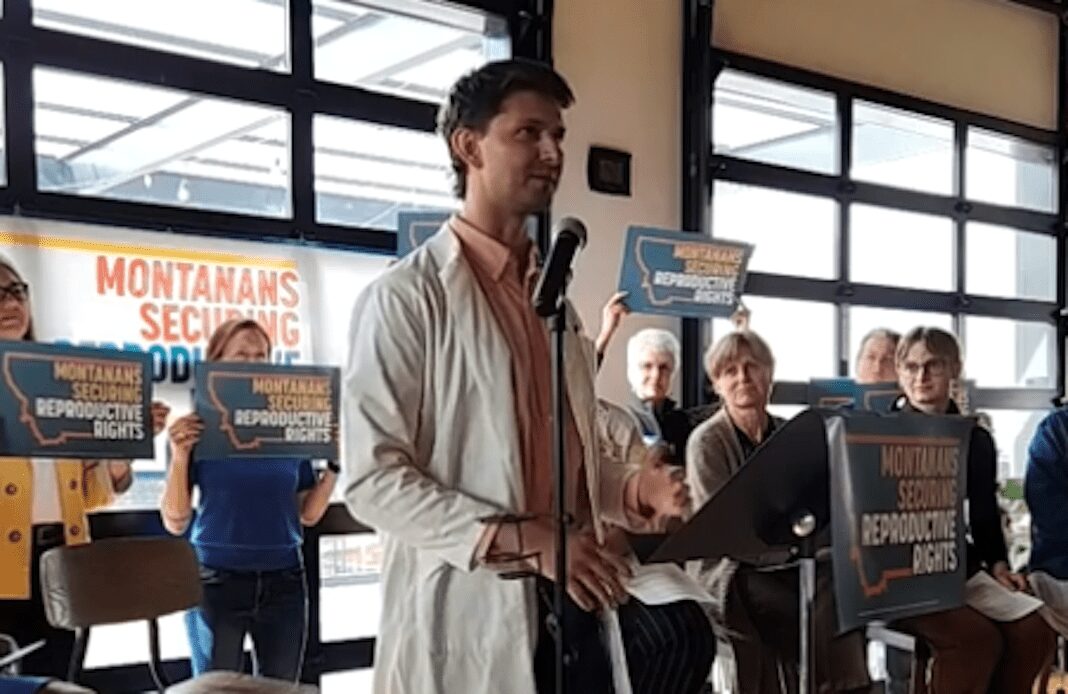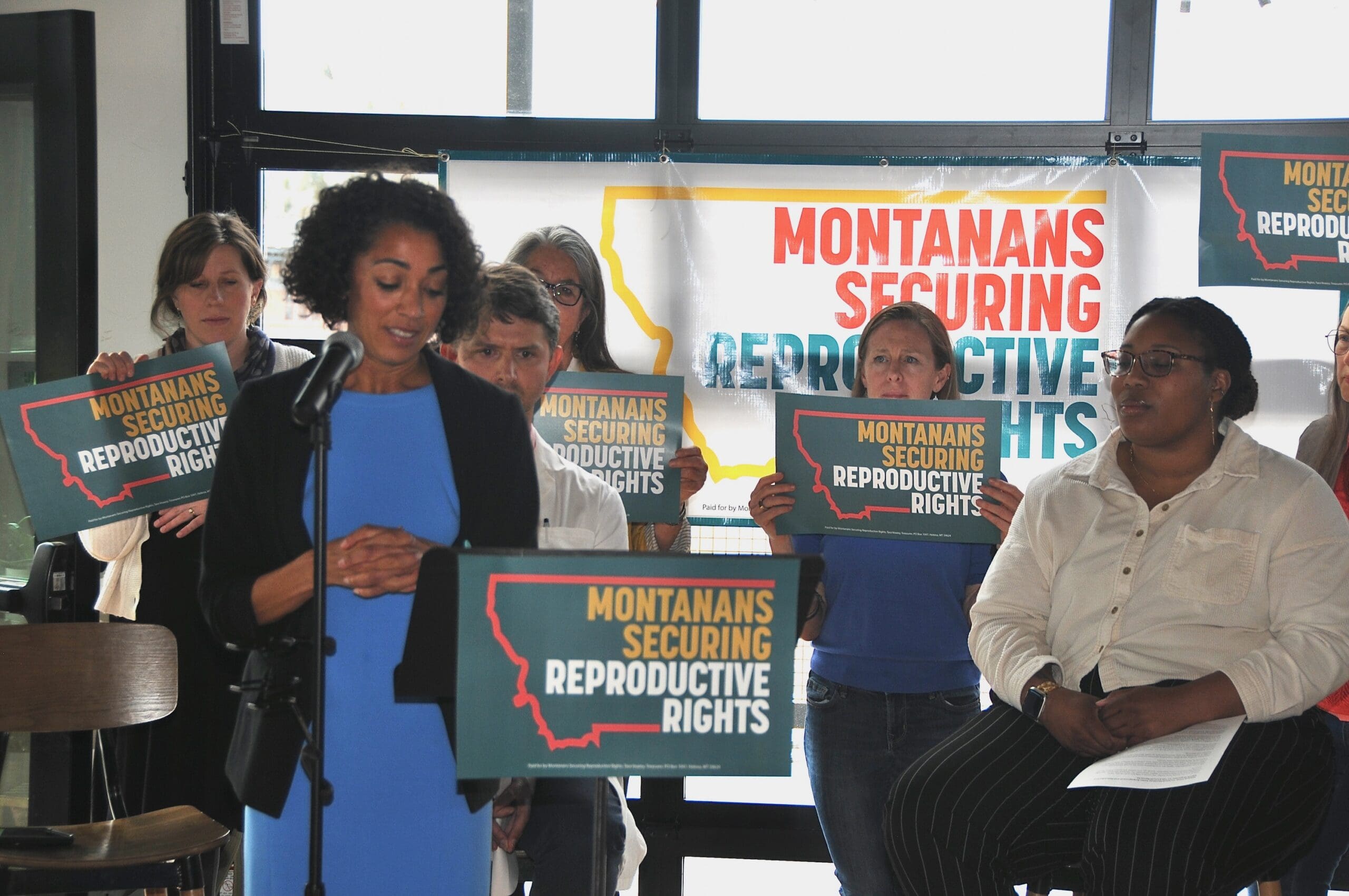Advocates for reproductive rights slam Knudsen’s deceptive move
Republican Attorney General Austin Knudsen is accused of trying to run out the clock on a ballot initiative guaranteeing abortion choice in Montana.

“Outrageous,” “deceptive,” “misleading” and “bad faith” were just some of the terms advocates for reproductive rights in Montana summoned to describe Republican Attorney General Austin Knudsen’s latest move in a running legal battle over a proposed ballot initiative guaranteeing abortion choice in the state. Just hours after that move —- Knudsen filed his proposed ballot language on the issue with the secretary of state — those advocates went straight back to the state Supreme Court seeking to have Knudsen overruled, and quickly.
Knudsen’s proposed ballot language was itself the result of an order by the Supreme Court in a ruling on March 18. The backers of the initiative — including Planned Parent Advocates of Montana, the state’s chapter of the American Civil Liberties Union, and Forward Montana — had gone to the court seeking to overrule an earlier ruling by Knudsen simply barring the initiative from the ballot, regardless of language.The advocates had in fact proposed ballot language with its initial filing, but Knudsen’s earlier opinion did not address it. The court agreed with the advocates that the issue was appropriate for the ballot, but sent the matter back to Knudsen to hash out appropriate ballot language within five days. Knudsen then responded “at close of business” on Monday’s deadline with his rewrite of the ballot language.
“The AG’s deceptive and argumentative ballot statement is deliberately written to obfuscate the clear purpose of the initiative — it does not even describe the initiative itself. By writing an outrageous statement that MSRR (Montanans Securing Reproductive Rights) is forced to challenge, the AG has added more delay to the qualification process that threatens to keep the Initiative off the ballot,” backers of the initiative wrote in a press release on Tuesday.
What follows is the original language proposed by the initiative’s advocates who are associated with MSRR:
“CI-___ affirms the right to make and carry out decisions about one’s own pregnancy, including the right to abortion, in the Montana Constitution. This constitutional amendment prohibits the government from denying or burdening the right to abortion before fetal viability. Additionally, the amendment ensures that the government cannot deny or burden access to an abortion when it is necessary to protect the pregnant patient’s life or health. CI-___ prevents the government from punishing patients, healthcare providers, or anyone who assists someone in seeking reproductive care, including abortion care.”
Below is the ballot language proposed by Knudsen:
“CI-*** amends the Montana Constitution to allow post-viability abortions up to birth and prohibits any State requirement for parental notice for a minor’s girl’s abortion. CI-*** leaves “fetal viability” and “extraordinary medical measures” to the subjective judgment of an abortion provider rather than objective legal or medical standards. CI-*** prohibits the State, or the people by referendum, from enacting health and safety regulations related to pregnancy care, except upon a narrow set of compelling interests. CI-*** eliminates the State’s compelling interest in preserving prenatal life. The State or the people may not enforce post-viability abortion regulations if an abortion provider subjectively deems the procedure necessary. CI-*** prohibits the State and the people from enforcing medical malpractice standards against providers for harms caused in providing pregnancy/abortion care. CI-*** may increase the number of taxpayer-funded abortions.”
In both drafts of the ballot language, the numerical designation is left out although the initiative has been tentatively labeled CI 14.
The advocates think Knudsen’s answer to the court is a tactic designed to run out the clock. By ensnaring the issue in the Supreme Court, Knudsen, who is a staunch abortion opponent, is pressing the initiative’s supporters up against a deadline for gathering the 60,000 signatures needed to place the issue on the ballot, which explains the advocates’ rapid reaction to the matter this week. In going to the high court on Tuesday, the group asked the justices to do what they declined to do in the March 18 ruling, to bypass Knudsen’s role in the matter and send the language the advocates have proposed straight to the ballot. Further, they asked for that ruling by the end of this week.
There’s a partisan undercurrent to the issue. Knudsen himself is on the November ballot in a statewide race, as are his Republican allies, Gov. Greg Gianforte and Tim Sheehy, a challenger to incumbent Democratic U.S. Sen. Jon Tester. All three Republican incumbents are aggressively and forthrightly anti-abortion. The problem for them is precedent: In states such as Wisconsin, Michigan and Kansas, placing abortion on the ballot has produced unpleasant electoral surprises for Republican candidates. Likewise, opinion research in Montana indicates voters of all stripes tend to back abortion rights.



